“A ground-breaking new view of the cosmos”
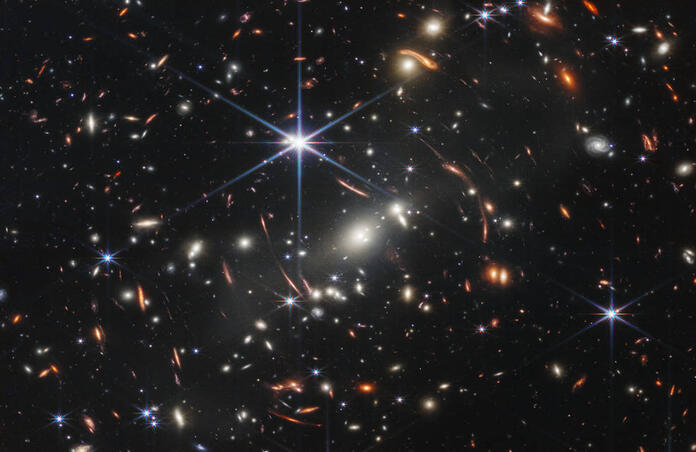
Not just one, not two, but five carefully selected full-colour images reveal the full power of the JWST for the first time !
You will have seen it all over the news: on Tuesday 12th July, NASA Administrator Bill Nelson and US president Joe Biden presented the JWST’s first science images to the public. Let’s take an astrophotographer’s perspective on this!
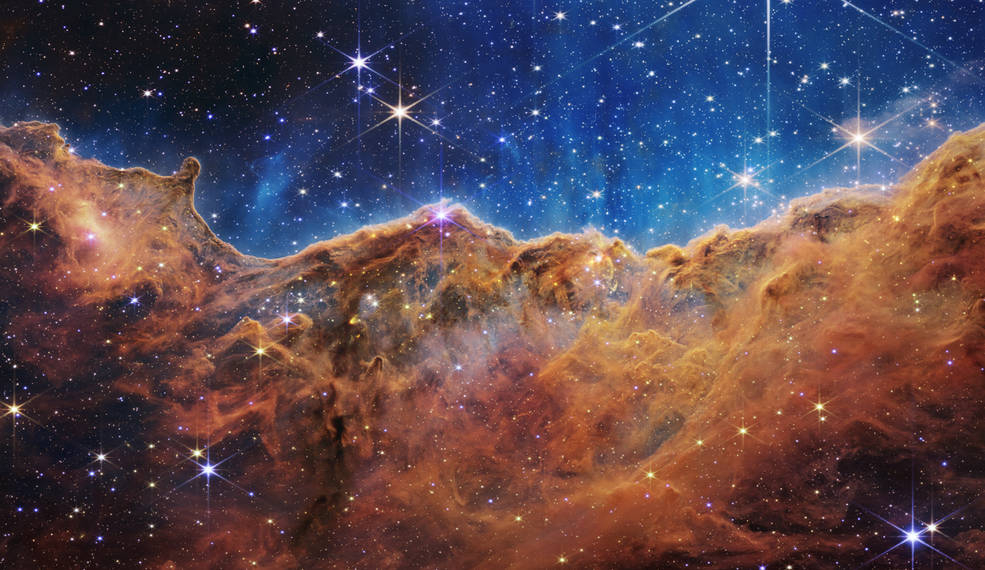
The Carina Nebula, a star-forming region 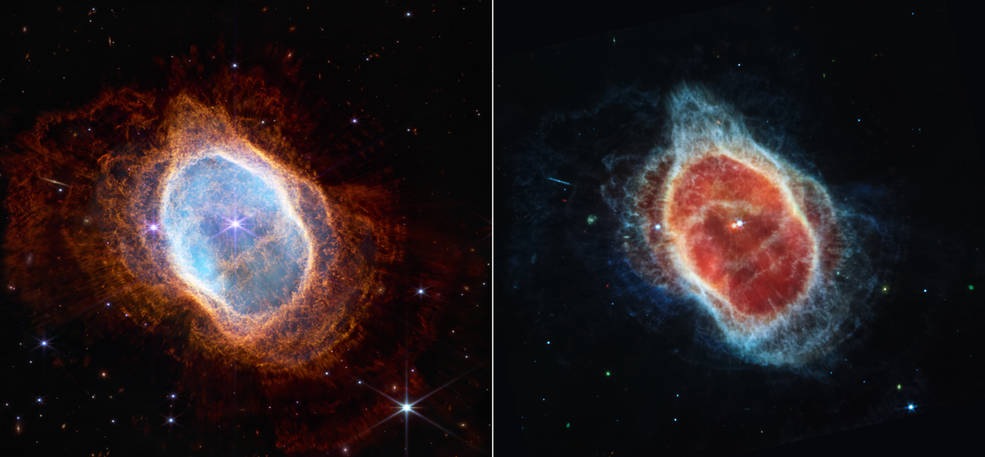
The Southern Ring Nebula, a planetary nebula
Two of those images were of nebular targets, the Carina Nebula and the Southern Ring Nebula. In the first case, thanks to its infrared “eyes” the JWST allows astronomers to look into the star-forming region, and actually spot some young stars still clothed in dust.
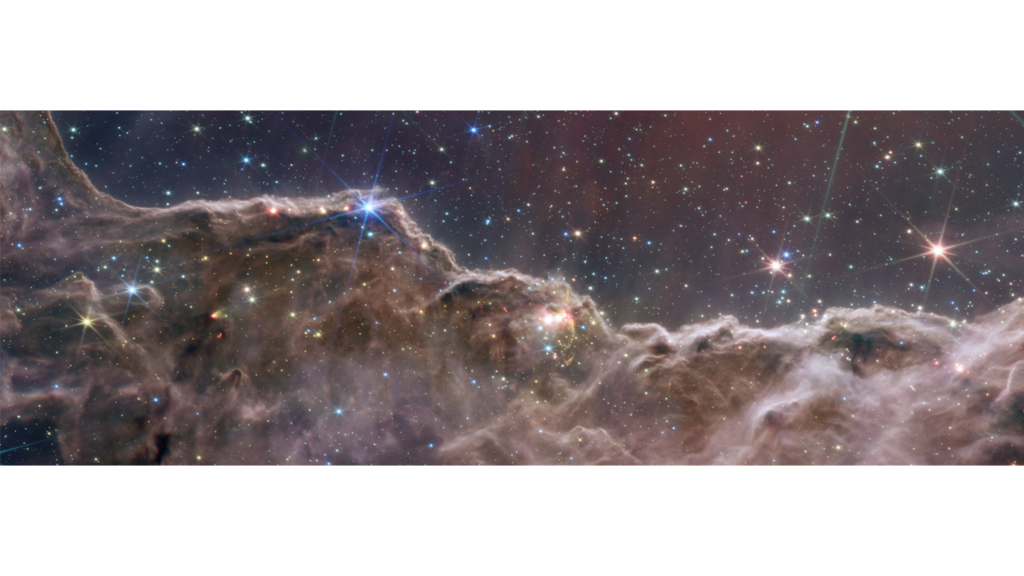
On the other hand, the Southern Ring is a planetary nebula, i.e., the leftovers from the death of a low-mass star. Besides the white dwarf which remains, too, this particular system also hosts a second star, which the Mid-Infrared Instrument (MIRI) captured for the first time.
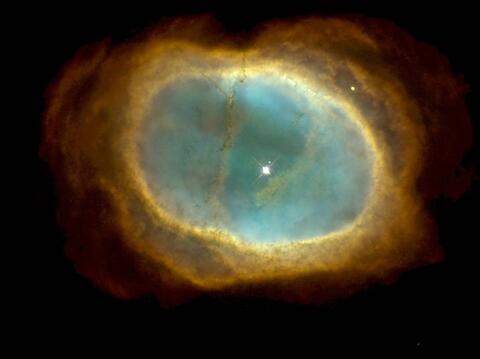
To really wrap your mind about how unbelievably great the JWST’s resolution is, NASA provides images from the Hubble Space Telescope images as a helpful comparison point. On NASA’s website, you can also zoom into these incredible views of our cosmos even further.
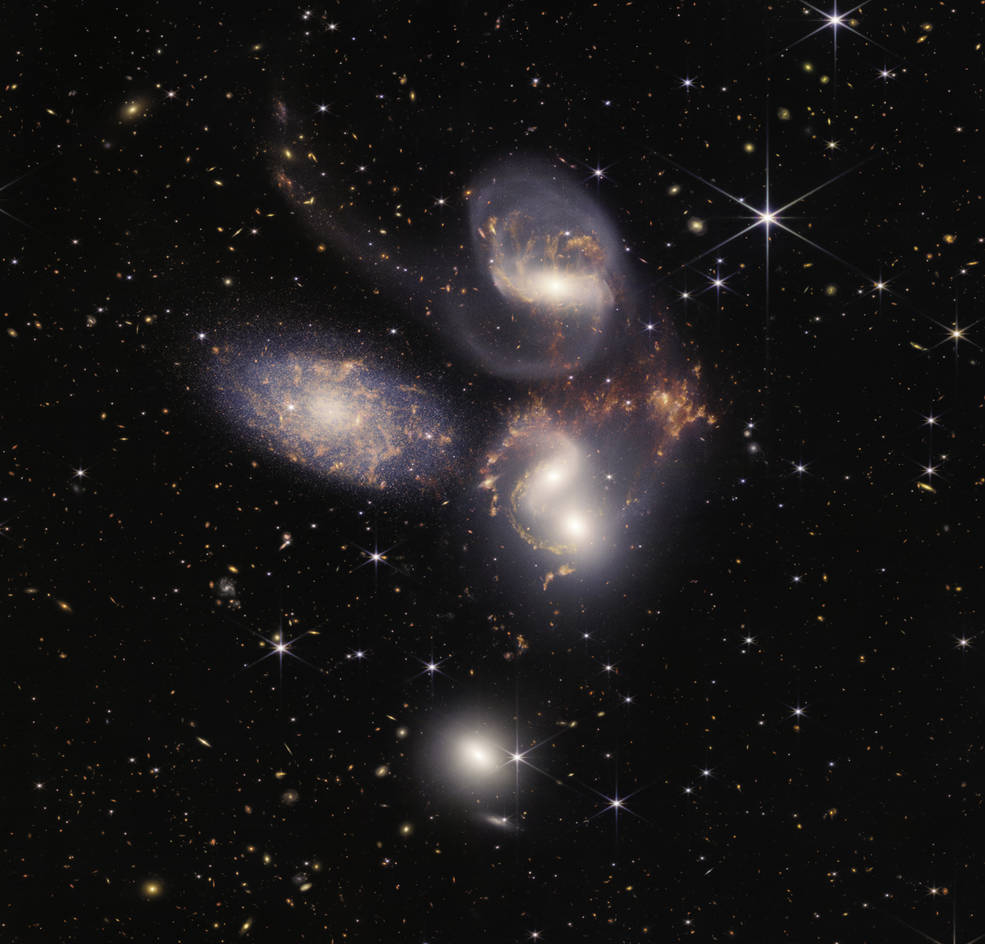
Besides looking at objects of great interest for stellar astrophysicists, the JWST captured not just one, not two, but again, a quintet, this time of galaxies. Known as Stephan’s Quintet (or formally the Hickson Compact Group 92), you may know this group of galaxies from the film “It’s a Wonderful Life”. The JWST picture above is actually a mosaic, combining almost 1000 images into one gigantic frame that looks at an area of the sky that’s roughly a fifth of the Moon’s diameter. There are many galaxies besides those of HCG 92 in this frame that form a stunning background canvas.
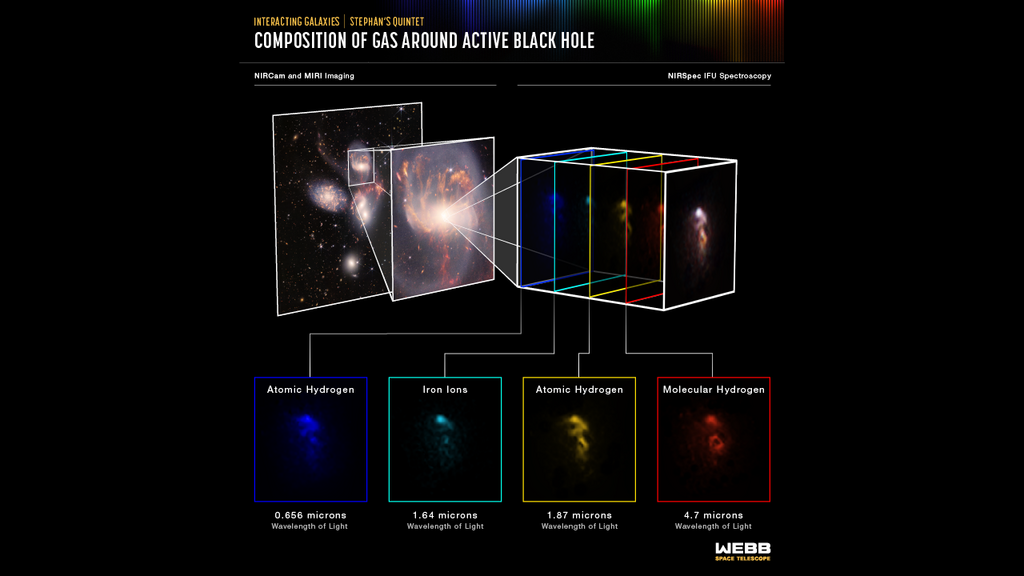
"The instrument’s integral field units (IFUs) – a combination of a camera and spectrograph – provided the Webb team with a “data cube,” or collection of images of the AGN's spectral features. Much like medical magnetic resonance imaging (MRI), the IFUs allow scientists to “slice and dice” the information into many images for detailed study. NIRSpec’s IFUs measured the bright emission from outflows of hot gas near the active black hole and it was able to determine its composition."
Although called a quintet, HCG 92 is actually composed of four galaxy which are interacting plus the leftmost one – as you can see, thee JWST was able to resolve individual stars in it because of its proximity to us. Interestingly, the topmost galaxy NGC 7319 contains an Active Galactic Nucleus, which is very promising for research into supermassive black holes and their growth.
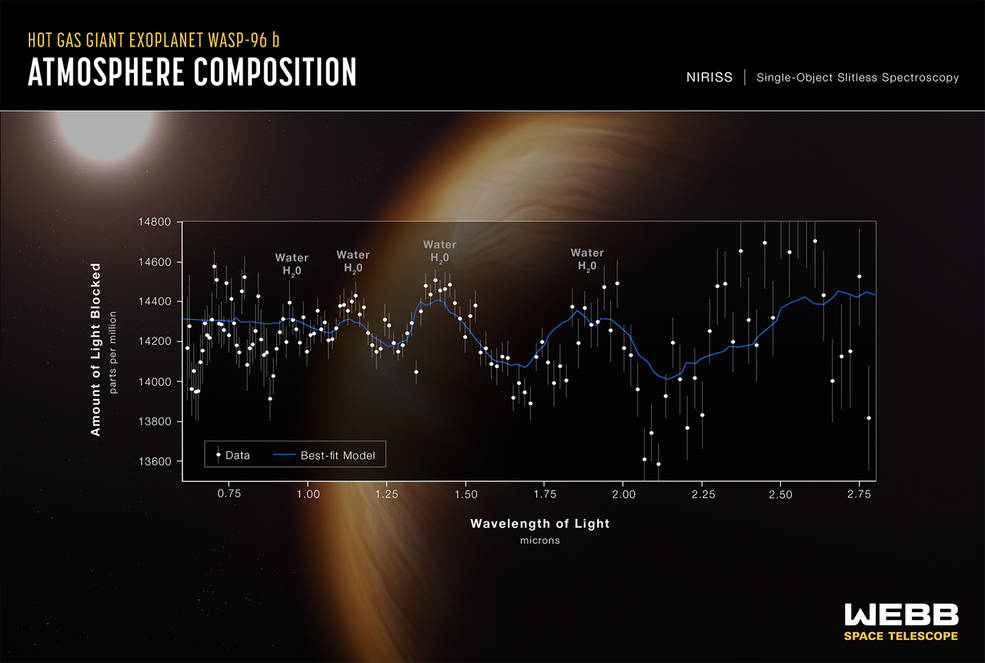
If that sounds exciting (and it is!), there is even more! Let’s not forget the JWST’s capabilities in terms of observing exoplanets. The fourth image is actually a spectrum of an exoplanetary atmosphere, taken during the transit of WASP-96 b across its host star.
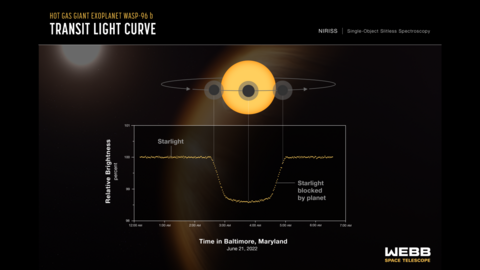
It is quite a curious planet: its diameter is 1.2 times that of Jupiter, yet its mass is less than half that of Jupiter and it is much closer to its star than even Mercury is to our Sun (a year there only lasts 3.5 days), and researchers believe that the temperature can reach more than 1000 °. What the JWST discovered, on top of confirming these other properties, is the presence of clouds and water in this giant exoplanet’s atmosphere.
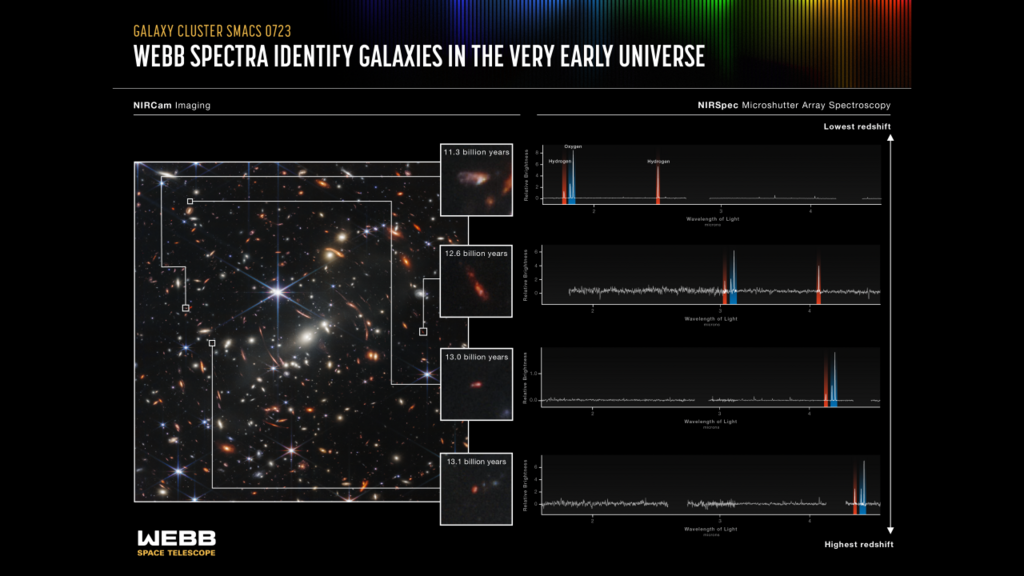
The Near-Infrared Spectrograph (NIRSpec) can gather spectra of up to 150 individual objects simultaneously. 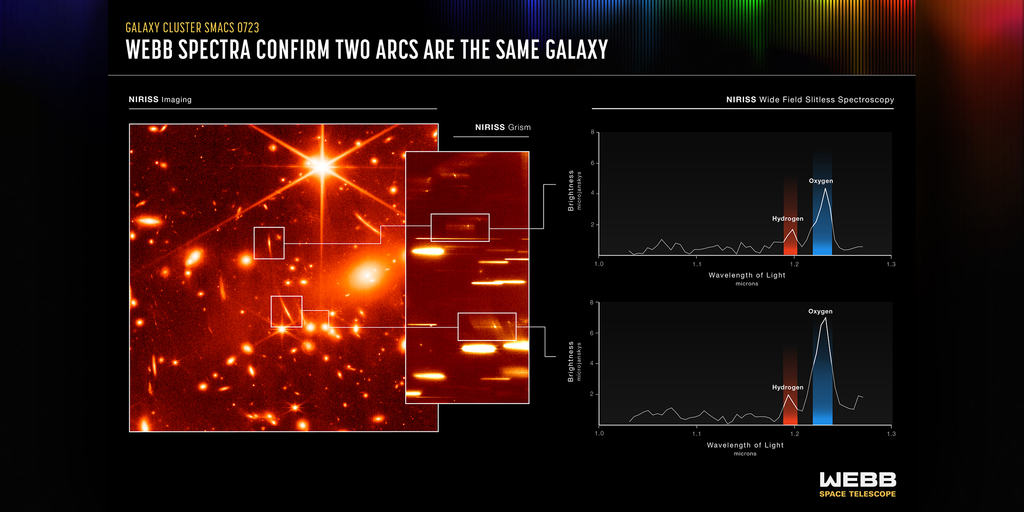
Gravitational lensing: galaxy cluster SMACS 0723 distorted, magnified, and mirrored many galaxies in this field
For cosmologists and, in fact, the majority of people, the most impressive image remains Webb’s First Deep Field (FDF) – and of course, it made it to be the cover image for this article. Beyond being stunning in and of itself, the FDF’s beauty lies in it being “the deepest and sharpest infrared image of the distant universe”; the improvement on Hubble’s Ultra Deep Field can be seen below.
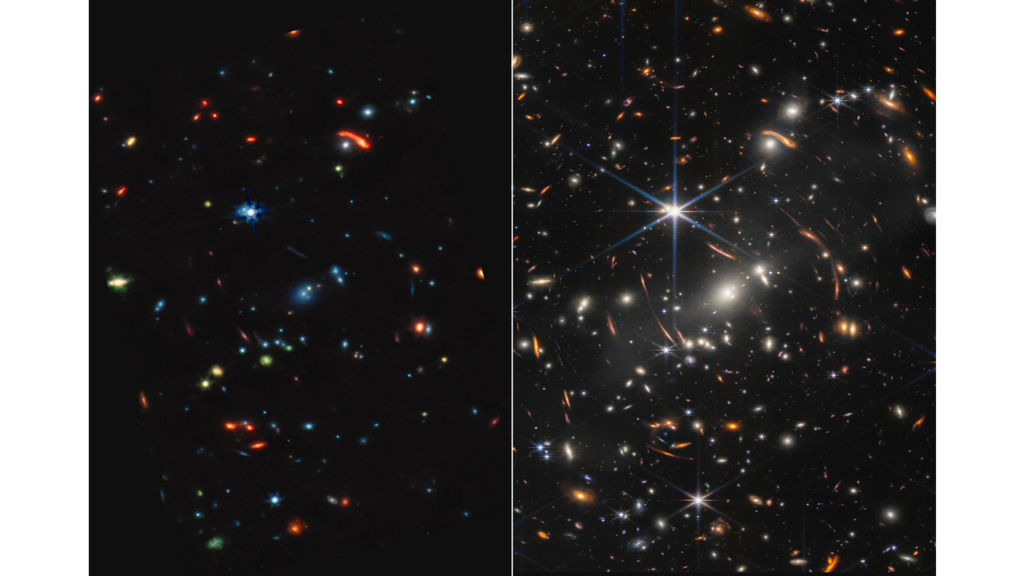
JWST's FDF (MIRI and NIRCam Images Side by Side) 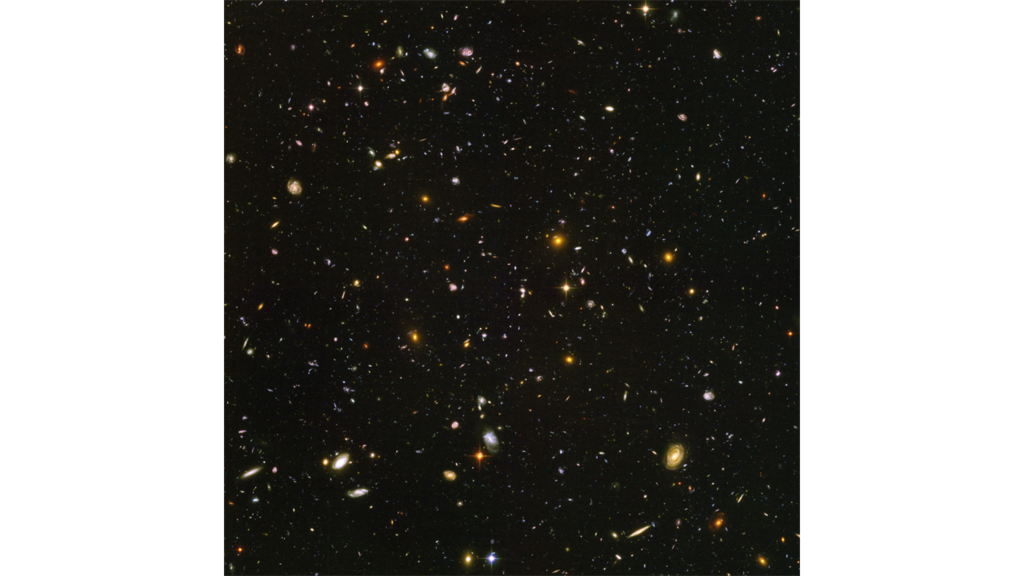
HST's UDF
It’s almost mentioned as a side result that this image of galaxy cluster SMACS 0723 includes some of the faintest objects that have ever been observed in the infrared. Oh, and the Near Infrared Spectrograph (NIRSpec) measured 48 individual galaxies at the same time. Notably to determine that one of the galaxies is at a distance of 13.1 light-years.
All of this is seriously mind-blowing.
All Image Credits to: NASA, ESA, CSA, STScI
